Sponsored by Murakami City
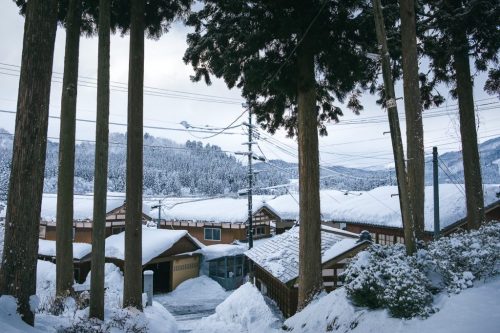
Takane: A Village Under the Snow
Niigata is famous for its heavy snowfalls during the winter month. When one ventures into the mountains of Murakami during winter, thick snow covers the landscape. The natural scenery appears immaculate, since the never-ending snowfall immediately covers blemishes left by human footprints with a fresh layer of snow. The buildings of Takane Village, their inhabitants themselves residing beneath deep layers of snow, blend into these these beautiful winter scenes.
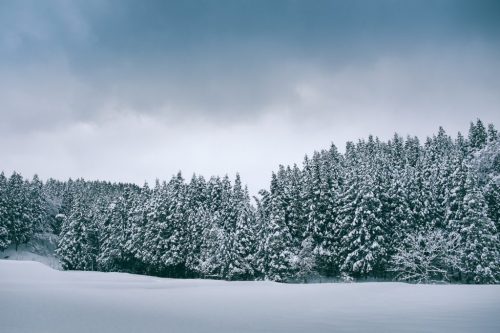
Takane Village is about 40 minutes away from Murakami Station via bus. When I got off the bus, I was in a rush to zip my coat and protect myself from the abundant snowfall. Then I saw the host family who had come to meet me. It should be said that are not many foreigners who venture into this small village, so it wasn’t very difficult to find me.
I did not know it yet, but I was about to have a rewarding, authentic experience that would turn into one of my best memories during in Japan.
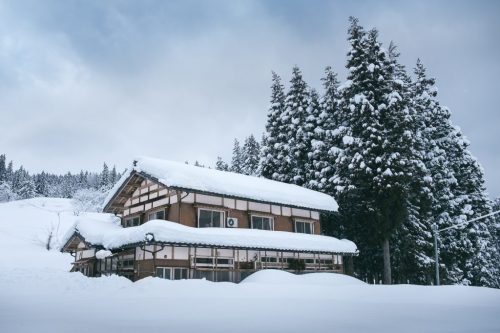
After quickly dropping my bags on the farm where I spent the night, it was time to go snowshoeing in the snowy Takane surroundings. Using snow tires, local cars drive in the plowed snow. But soon the road becomes a path, which is far from plowed. The car stops; it’s time to get out and put on our snowshoes.
A Snowshoe Tour of Snow-Covered Rice Fields
I was accompanied by two people from Takane. One was a former soldier who knows the backroads of the village like the back of his hand, sometimes venturing out into the middle of the night amidst the snowy expanse to take pictures of the starry sky. The other, a young girl from Hokkaido, who lives in Takane and speaks English well enough to play the interpreters when foreigners come to visit this little village.
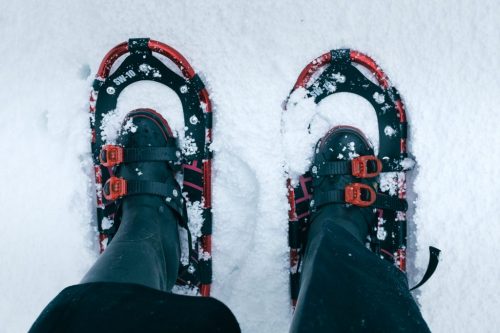
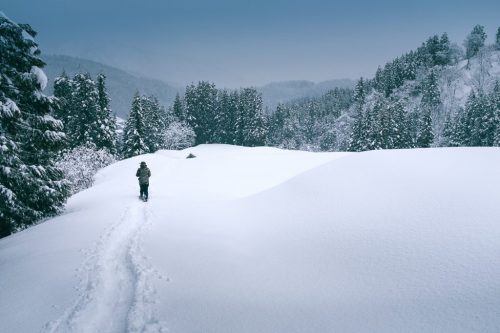
The snowy landscapes are superb and I am with my guide who leads the way and creates the path. He traces an opening in the field of virgin snow. It’s an amazing feeling to walk in these stretches of untouched snow, like walking on a cloud. Snowshoes go far, but you still need to be careful. The former soldier knows the terrain. He guides me over an invisible stream, completely covered by snow. We are actually walking in the middle of a rice field.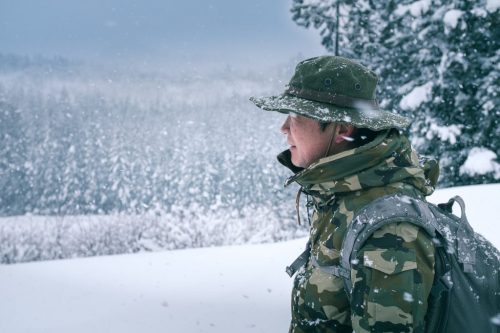

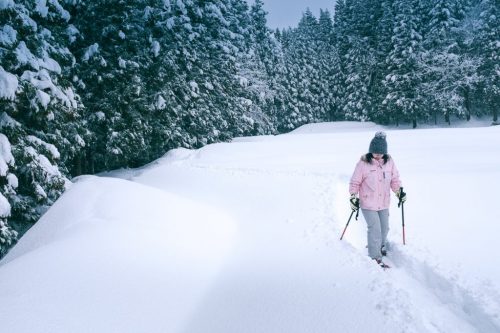
Our writer Estelle had been to Takane on the same farm last spring. She had the opportunity to plant rice in these same farm fields. I had read her article before visiting Takane myself, and what surprised me was that I was standing exactly where she had discovered young shoots of rice the summer before.
The snow had temporarily transformed this landscape. Takane had revealed a new and entirely different facet of itself to me.
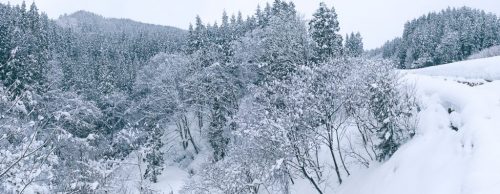
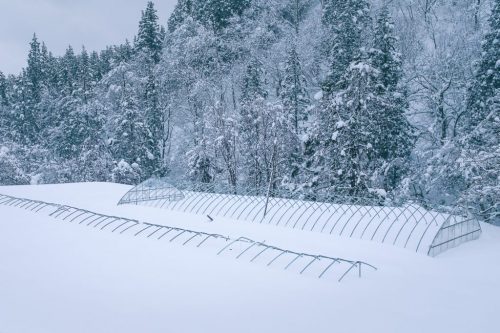
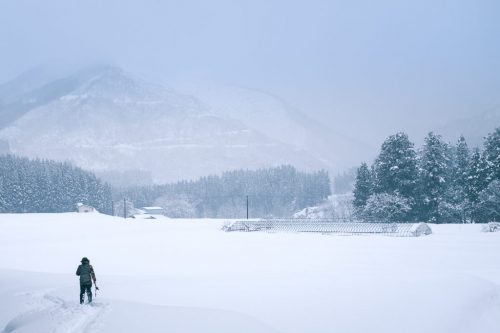
In the forest, a tree was bent under the weight of snow. We sit down to take a break and use the opportunity to drink coffee, kept warm in a thermos. But my hosts also brought with them amazake, a sweet and slightly alcoholic drink made from rice. There is the added flavor of Yuzu, a Japanese citrus fruit, that makes it even more delicious. The break is prolonged a little longer, when the former soldier brings out a small bottle of sake and arranges glasses in the middle of the snow. The sake is very fresh and fragrant. It’s time to go home and warm up.
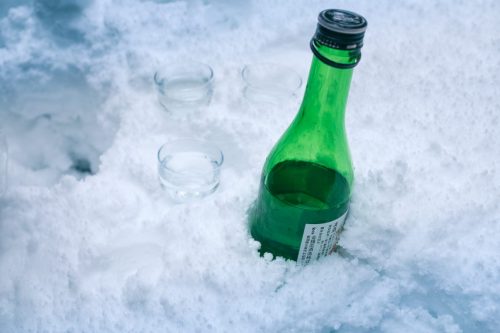
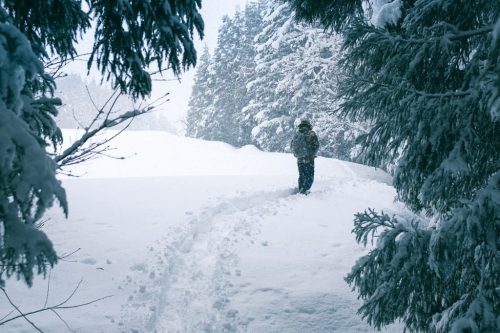
A Farmer’s Home
While my hosts are bathing, I finally have the opportunity to really discover my accommodations and the farmer’s house in which I’ll spend the night. Hotels, especially ryokan (traditional Japanese inns), are very pleasant in this country, but spending a night in a farm house offers a unique and more authentic experience.
Minshuku Zaigomon is a family home. Photos are on the walls, the sounds of footsteps and children coming home from school…the experience puts you temporarily in the life of the family your are staying with and allows you to discover the rhythm of life here in the heart of the Japanese mountains.
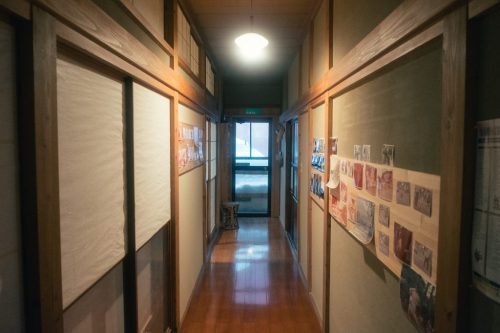
However, I have my own space. My room is spacious and designed in a typical Japanese style. Tatami flooring with sliding doors all around me. A small living room faces my room. In the center, a coffee table with a fireplace, where embers are slowly consumed, keeping warm a kettle of water. Outside, snow goes on as far as the eye can see. It’s good to be warm!
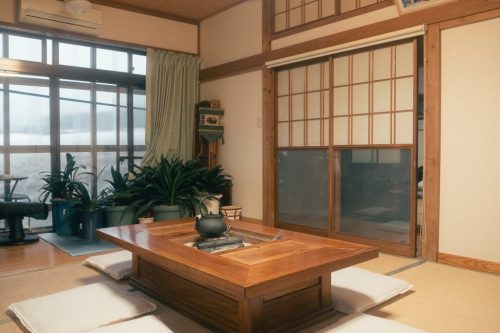
The bath is ready. Before entering the hot bath water, you wash your body outside the tub. My host offer apology, the pipes have frozen because of the cold and the shower head does not work (many do not use showers regularly in remote and rural Japan). I use a small basin to take some water out of the bath to wash myself, instead. Then I submerge myself and enjoy and relax in the bath.
Entering the bath after an afternoon of showshoeing is a simple pleasure that made me feel at home.
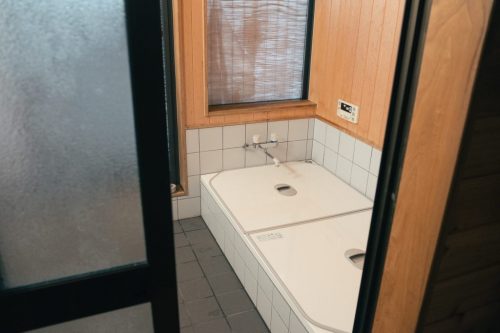
Homemade Meals
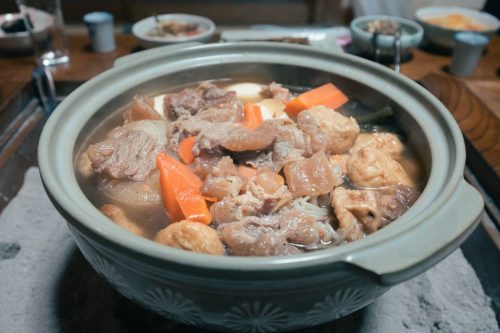
The oden dish is placed in the center of the table, above the irori (hot stone) that will keep it warm during the meal. Simmered for hours, this dish is delicious. The melting meat and daikon (Japanese radish) are particularly tasty. I am told that they were harvested under the snow, which contributes a unique flavor to the produce. The vegetables are produced by the family, and the fish is from the surrounding area. Small dishes come one after another. Maki (sushi roll), tempura, grilled fish, vegetables, pumpkin custard…everything is absolutely delicious.
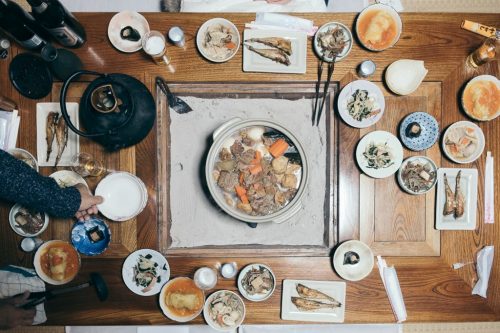
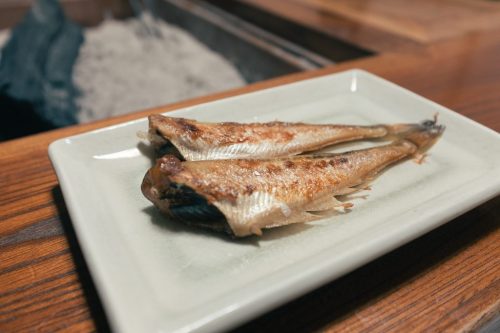
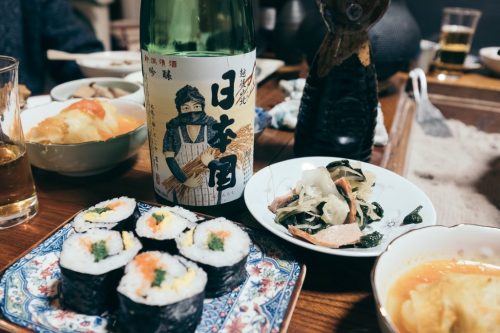
To accompany the meal, we drink sake produced in Murakami. This is the first time I had tried hot sake. It’s sweet and warm; ideal for this time of year. My hosts are very warm. The father calls his children to take a look at the kanji, written Japanese characters, I’ve been learning. Then he apologizes, he has to go to bed. He gets up at 3am to clear the roads of the village.
The grandmother takes me his place and the evening continues. Everyone is incredibly kind. They make feel at home. In the space of one evening, I was part of a Japanese family and I went to sleep with a heart warmed the benevolence in this farm house family.
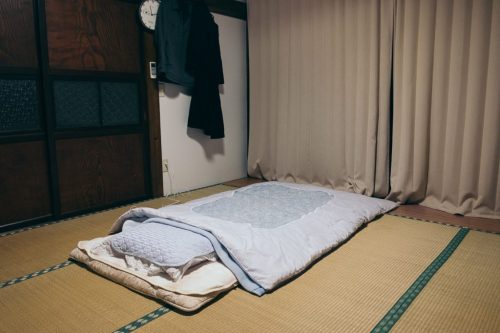
Breakfast and Departure
In the morning, breakfast is just as generous as dinner. Salad, fish, rice–a real meal to start the day. Salmon, a famous specialty of Murakami, is the highlight. The grandmother, who comes to serve my breakfast, explains that I can grill the nori (seaweed leaves) on top of the irori glowing in the center of the table.
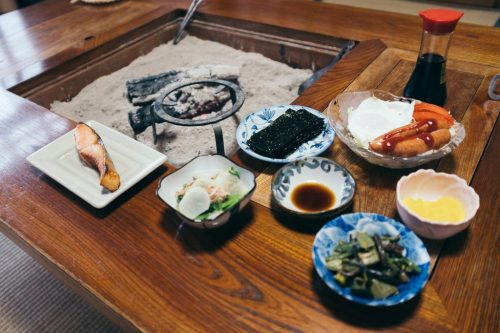
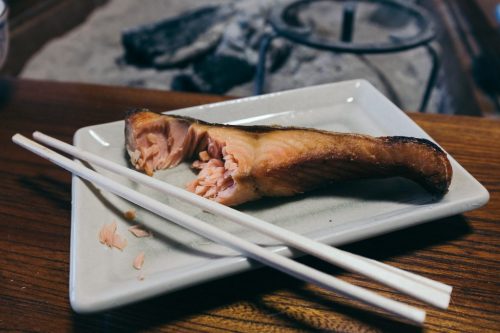
When I leave here, she sends me a message from the whole family. They hope I will come back to see Takane in another season. Before taking the bus, I walk one last time in the streets of the village. Some people stand on the roofs, shovel in hand, to remove heavy snow from their homes.
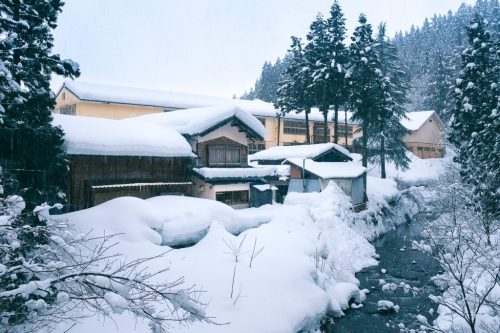
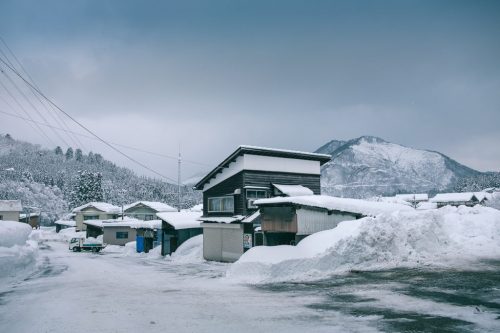
Life in the mountain side of Niigata, in winter, seems to revolve around the snow. On my way back to the bus stop to catch a ride back to Murakami Station, I run into the father driving a snow plow. It clears the snowy roads of Takane. It’s almost ten o’clock and I know he began his work at 3am. I admire the courage of these people. Yes, of course, I’ll come back to see them.
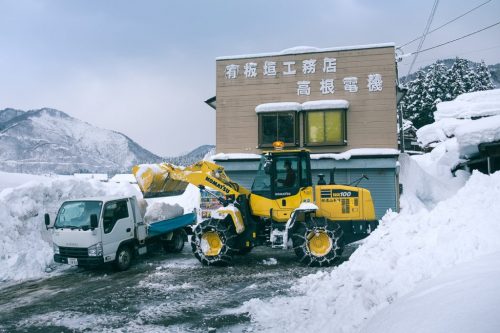
Reserve Your Stay at the Farmstay Zaigomon
To book a night at the Farmstay Zaigomon in Takane, you can send an email to yumehana.725@zaigomon.com
The price for one night and for one person is 8,000 yen, dinner and breakfast included. If you are two looking to share the room, the price will be 7,000 yen per person. For three it will be 6,500 yen per person and for four it will be just 5,000 yen per person.
Snowshoeing in the middle of snowy Takane will cost you 2,000 yen. This is of course only possible when there is snow. But Zaigomon offers many activities depending on the season, allowing you to take full advantage of the nature surrounding the village. Do not hesitate to contact them by email for more information!
[cft format=0]


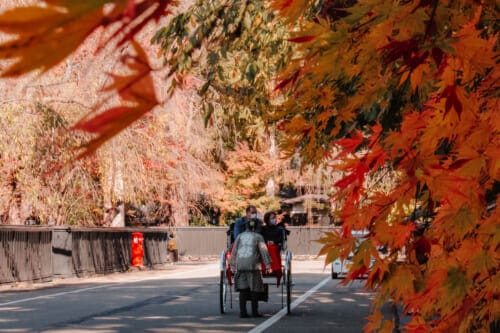

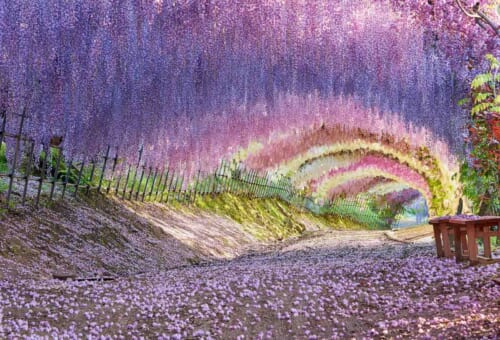
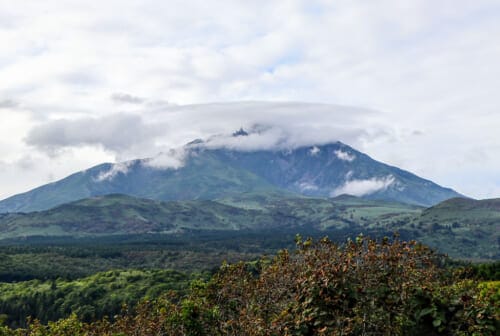
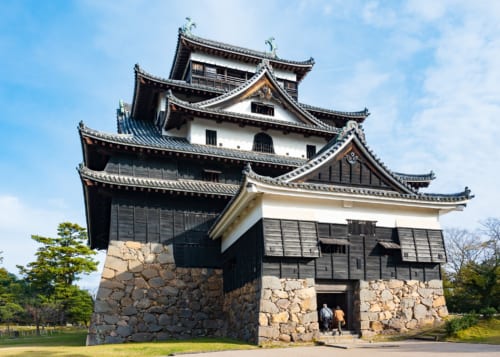
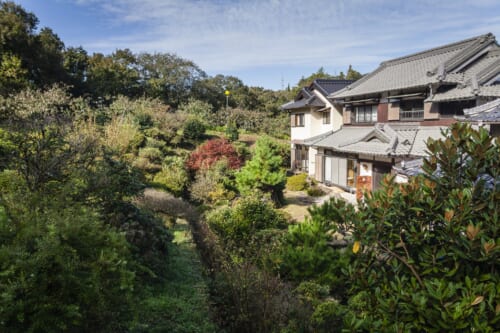


No Comments yet!